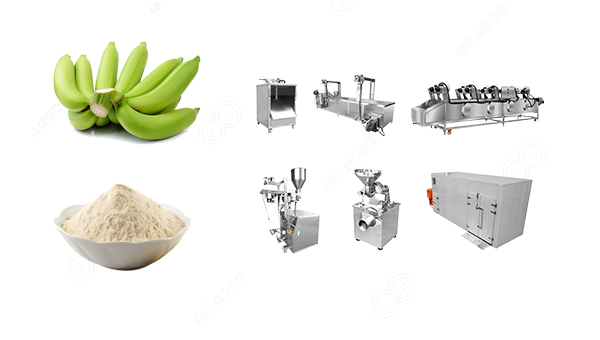Banana flour has gained popularity in recent years due to its versatility, nutritional value, and gluten-free properties. Made from green, unripe bananas, banana flour offers an excellent alternative to traditional wheat flours. But how is banana flour manufactured? Let’s delve into the process.

Harvesting and selection
The journey of banana flour begins on the banana farms. Green, unripe bananas are selected for processing, as they contain higher starch content compared to ripe bananas. These bananas are carefully harvested to ensure quality and freshness.
Peeling and washing
Once harvested, the bananas are transported to the processing facility. Here, they undergo a thorough washing process to remove any dirt or impurities. Then, the bananas are peeled either manually or with the help of machinery.
Slicing and drying
After peeling, the bananas are sliced into small pieces to facilitate drying. There are various methods for drying bananas, including sun drying, oven drying, or freeze-drying. However, for commercial production, most manufacturers use industrial drying methods to ensure consistency and efficiency.
Industrial drying process:
Preparation: The sliced bananas are spread evenly onto trays or conveyor belts.
Drying: The bananas are subjected to controlled heat and air circulation to remove moisture. This process can take several hours, depending on the method used and the desired moisture content.
Grinding: Once dried to the appropriate moisture level, the bananas are ground into a fine powder using specialized milling equipment. This results in the formation of banana flour.
Sieving and packaging
After grinding, the banana flour undergoes sieving to remove any larger particles and ensure uniform texture. The flour is then packaged into various sizes, ranging from small consumer packages to bulk bags for industrial use.
Quality control
Throughout the manufacturing process, strict quality control measures are implemented to ensure the highest standards of safety and quality. This includes regular testing for moisture content, microbial contamination, and other quality parameters.
Storage and distribution
The packaged banana flour is stored in a dry, cool environment to maintain its freshness and extend its shelf life. Once ready, it is distributed to retailers, wholesalers, and food manufacturers for use in various products.
Applications of banana flour
Banana flour has a wide range of culinary applications, making it a versatile ingredient in both sweet and savory recipes. It can be used in baking bread, cakes, muffins, and pancakes as a gluten-free alternative to wheat flour. Additionally, it can be added to smoothies, soups, and sauces as a thickening agent or nutritional boost.
The manufacturing process of banana flour involves several steps, from harvesting and peeling to drying, grinding, and packaging. Through careful processing and quality control measures, manufacturers are able to produce a high-quality product that retains the nutritional benefits of bananas. If you want to get more information of the banana flour processing machine, leave message to us.